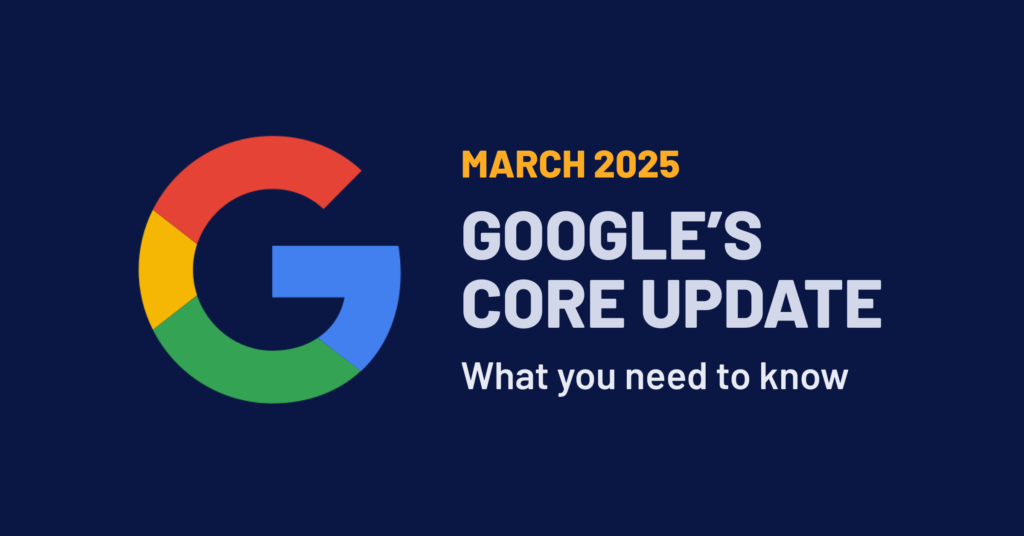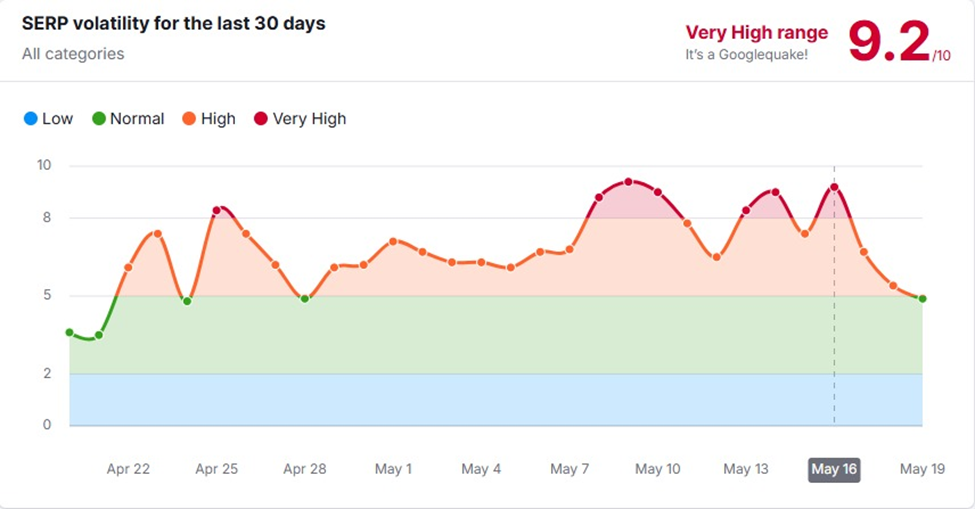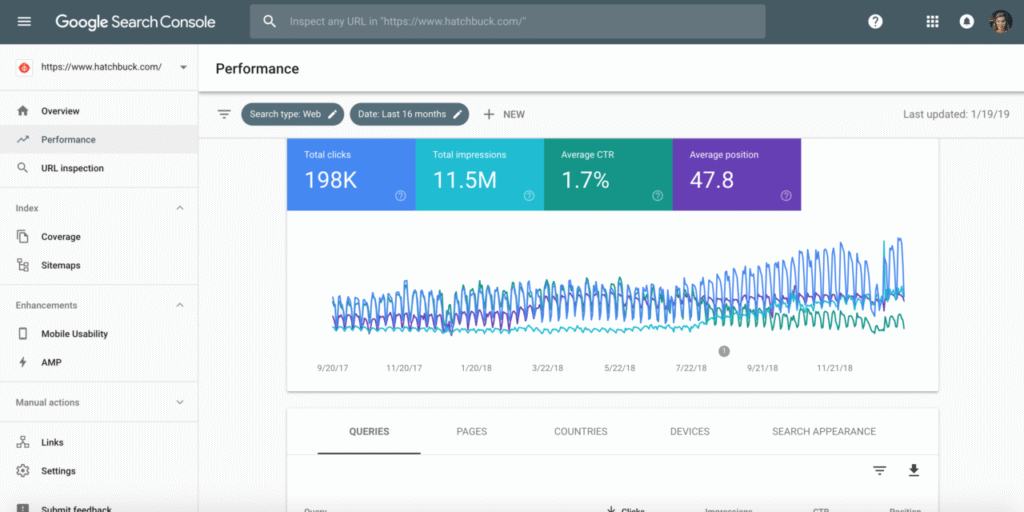1. Introduction: The Changing SEO Environment
In an age dominated by the internet, short attention span and king-sized content have made it more crucial than ever to be discoverable online through search engines. At its forefront still stands Google, continually updating its algorithm to deliver even more relevant, quality content to its consumers. For marketers, businesses, and content creators, being aware of these upgradations is critical to staying ahead and finding an online presence.
The latest algorithm changes launched in March 2025 have once again transformed the game of Google SEO. The changes focused on improving user experience as well as content quality have created waves among industries. Whether you have a blog site, an e-commerce site or a service site, it is now an imperative rather than an option to keep up-to-date with Google’s continuously changing rules.
This article summarizes the most recent algorithm change, including changes, their effects and tips on how to future-proof SEO efforts.
2. The March 2025 core update
Google began rolling out its primary algorithm change on March 13th, 2025, and will be completed by March 27th. The roll-out is an extension of Google’s continued effort to set a higher standard for its search results by giving merit to valuable user-focused and authoritative material.
One of its greatest effects is its seemingly deliberate focus towards going back to source content that became more popular over recent years. Google specifically targeted websites with massive content operations that generally included large-scale produced artificial intelligence-based material lacking depth and originality.

The algorithm update extended to various areas based on forum-based websites as well, although there were websites including Reddit that held their spots or even achieved better rankings based on community engagement and original material quality.
Another core emphasis during the upgrade is including more advanced machine learning signals to better estimate user satisfaction. This includes measuring click-through behavior, time on page, and bounce rates to more effectively fine-tune rankings.
While technical, all changes have meaningful consequences. Sites previously reliant upon past SEO tactics or low-quality material noticeably lost their rankings. At the same time, sites with frequent high-quality material based on user intent experienced rankings improvements.
Generally speaking, March 2025 core update reaffirms quality above quantity as an ongoing trend. For SEO specialists and writers alike, it stands for additional encouragement towards focusing on user’s needs rather than manipulating search engine rankings.
3.Primary Impacts Introduced by the March 2025 Update

a. Forum Content Re-evaluation
Forum websites have been a double-bladed sword in search ever since. They contain good information but also contain misinformation or out-of-date messages. The March 2025 update hones in on that. Ongoing moderation and high volumes by Reddit continue to be an advantage for it, while less regulated forums lost out in visibility rankings.
b. Impact on Programmatic Content
Websites whose programmatic SEO practices included templated landing pages or templated articles by capitalizing on long-tailed keywords were targeted especially. Google’s updated spam filters better detect templated, low-quality pages without thoughtful human intervention now. The target is particularly on affiliate marketing websites and link-building farms with an emphasis on automation rather than originality.
c. Prioritize Relevance and User Satisfaction in Content
Google now favors more signals from user satisfaction. Low engagement pages irrespective of keyword optimization are being ranked lower. Conversely, pages that keep readers engaged and fulfill search intent get favored. Multimedia utilization, internal linking, and comprehensiveness in content have surfaced as major success drivers.
In addition to user data, Google is also refining its natural language processing (NLP) algorithms to grasp context and intent better. This makes creators move beyond mere keyword usage and focus on providing complete and well-thought-out information that is more valuable to humans.
The news is out all over Google: the content must be authentic, valuable, and relevant to the audience’s requirements. Clickbait titles and keyword saturation is so last season now. The secret to success is to create material that resolves real queries, fixes real issues, and creates real value.
4. Launching Google Search with AI Mode

In its first pioneering attempt, Google rolled out “AI Mode” early in 2025 as an experimental search feature. Backed by its advanced Gemini 2.0 model, AI Mode allows people to enter intricate and multi-step queries and receive synthesized conversational responses within SERPs.
AI Mode is not an illusion but a paradigm shift in human interaction with search. Instead of being presented with numerous blue links to scroll through, humans are given deep explanation and suggestion and summaries generated by AI.
AI Mode is especially useful in trip planning, comparative research, or solving complex multi-step problems.
For creators, it is all about adjusting to be visible. Featured snippets, FAQs and schema.org data now play an even more significant role in becoming part of AI-driven replies. The content is not just required to educate but must be easily consumable by machines as well.
Moreover, Google’s AI Mode accommodates multimodal inputs; that is, images, speech as well as text can be entered simultaneously by the user. With its innovative interactive model, websites must concentrate on access and support various forms of data such as video, charts, and infographics.
Briefly stated, AI Mode is rewriting the search rules. Brands need their content to be both highest-quality and adaptive and compatible with future formats and user behavior. They stand to lose out on opportunities and less exposure if they don’t do that.
5. Effect on Different Stakeholders

Website Owners and Blog Writers
Small publishers, bloggers and SMEs experienced mixed results as a result of March 2025 update. Sites that emphasized creativity, deep analysis and user experience tended to improve their rankings. Sites that rely on syndication and low-effort content fared poorly in terms of visibility.
This points to a crucial aspect about Google’s ever-evolving algorithms rewarding more and more authentic expertise and penalizing taking shortcuts. Even older websites aren’t exempt if they use outdated practices.
b. SEO Experts
The refresh refocused the SEO space in a less keyword-based direction. SEO experts must now incorporate more wide-ranging skills that span UX design and web analytics through to planning and building audiences.
A trend emerging is how SEO is now being affected by factors beyond on-page terms. Brand trust is becoming more and more important as is engagement and social signals.
This change necessitates an adjustment in mindset. Rather than optimizing for machines, you’d be optimizing for humans. SEO specialists who change their mindset in this manner stand a better chance of surviving algorithm changes in the future and succeeding in the big picture.
6.Best Practices after Update

The March 2025 Google core update has redefined what it means to create high-ranking content. As search algorithms grow more sophisticated—favoring intent, engagement, and quality over keyword manipulation—marketers and creators must rethink their SEO playbook.
The days of “writing for bots” are fading fast. To stay competitive, websites must embrace a more holistic, user-centered approach. In this section, we’ll break down the best practices to thrive in this new era of search—covering content strategy, technical SEO, and how to ethically harness the power of AI without getting penalized.
a. Developing People-Focused Writing
Content that is for people’s purposes and not algorithm gaming is most likely to perform well. So focus on E-E-A-T: Experience, Expertise, Authoritativeness, and Trustworthiness. Use real-life examples, cite expert sources, and give unique insights.
Is it not obvious? Do I need to clarify it? Do I need to elaborate? 😉
b. Technical SEO Considerations
Technical soundness remains to be a pillar of SEO. Ensure that your site is quick to load, mobile-friendly and crawl error-free. Use schema markup so that search engines know how to properly parse your content.
Regular site scans identify issues before they become ranking issues. Google Search Console and Screaming Frog are excellent tools to be on top of technical health.
c. Ethical Use of AI in Content Creation
AI chatbots like ChatGPT can be a great help—if you use it responsibly. Use it to brainstorm and even co-write and then infuse it with human judgment and touch. Google’s algorithms increasingly have an eye for spotting quality AI-augmented material and generic fluff generated by machines.
Lastly, the ideal content is one that combines technology effectiveness and human creativity. Use whatever voice is yours and ensure that your content is actually satisfying an existing user need.
7. Recovery Strategies for Affected Sites

If traffic to your site declined after an update, don’t panic just yet. Recovery is possible through a combined and planned effort.
Start by performing an extensive audit to identify weak areas. Do you have thin pages full of poor-quality content? Do you have an above-average bounce rate? Fix those issues methodically.
Then improve content quality. Update old content, strengthen poorly performing pages, and remove low-quality pages or merge them with others. Focus on depth,clarity, and relevance.
User feedback is also helpful in making improvements. Use tools such as Google Analytics or Hotjar to learn about how people interact with your website.
Finally, be patient. Algorithm recovery is never instantaneous. Continue creating high-quality content, keep an eye on your numbers, and remain adaptive with your strategy.
8. Future Outlook: Preparing for Future Updates

As search continues to change, one thing is certain: the future SEO superpower is flexibility. The path Google is on is more towards artificial intelligence reliance, user satisfaction signals, and content validity.
Be aware of future implementation to further fine-tune how search understands context, multimedia, and search intent. Voice and image search is on the rise and websites need to fit into that.
Remaining up-to-date, innovating sustainably, and focusing on building long-term value will be ongoing approaches. Those who keep up and build upon their presence continually will be able to thrive in the constantly changing world of search.
9. Conclusion: Embracing Change for Digital Success
Google’s March 2025 core update is more than a modification-it is an indication of the search engine giant’s commitment to making user experience its top priority. While the updates have been problematic for some, they also promise growth and innovation. By keeping their focus on quality, human-centered content and evolving with new technologies such as AI Mode, companies are not only surviving but are actually flourishing. The key is to see standalone updates not as obstacles but as waystations along the path to a higher, richer web. Be up-to-date, be versatile, and continue producing material that is timely.

